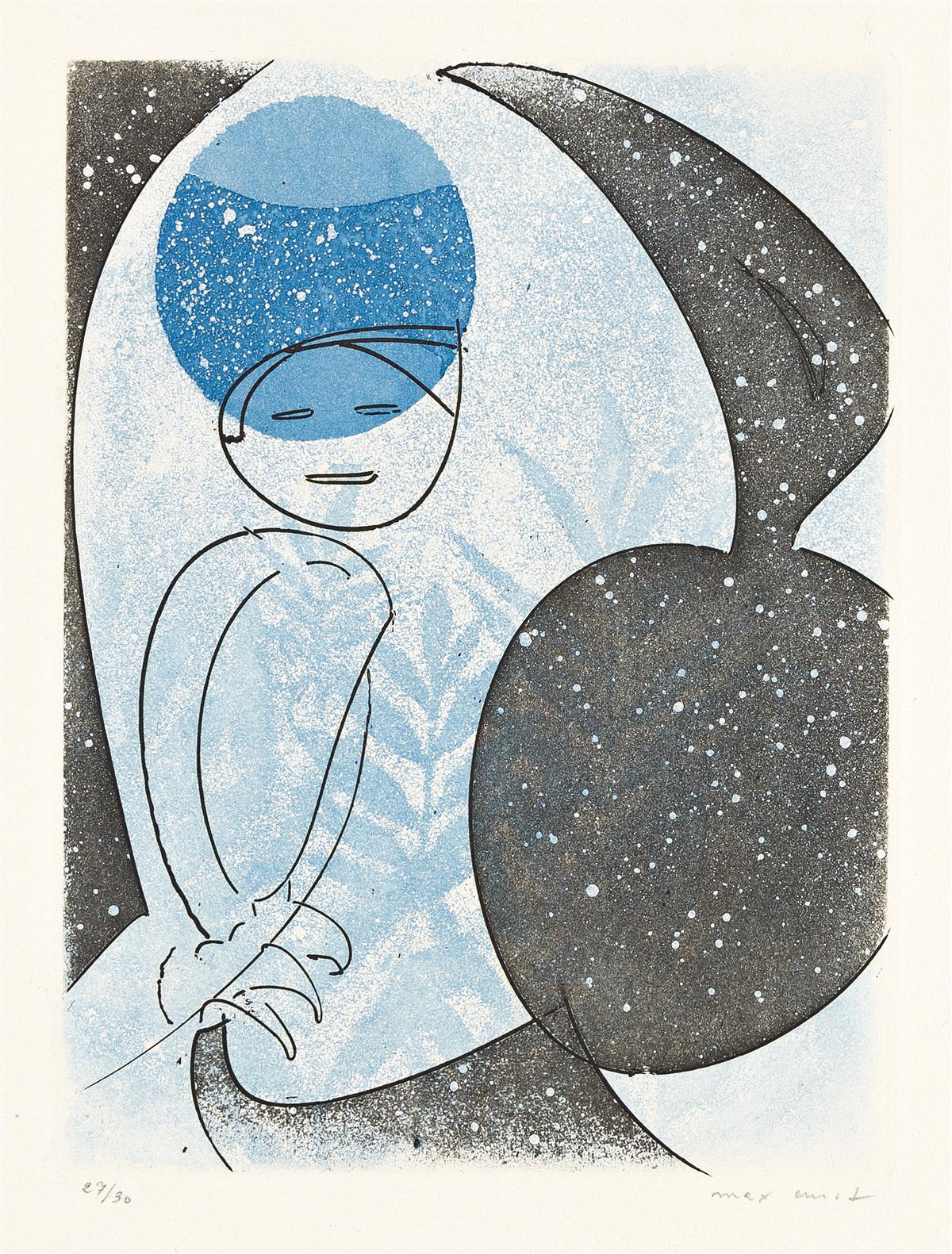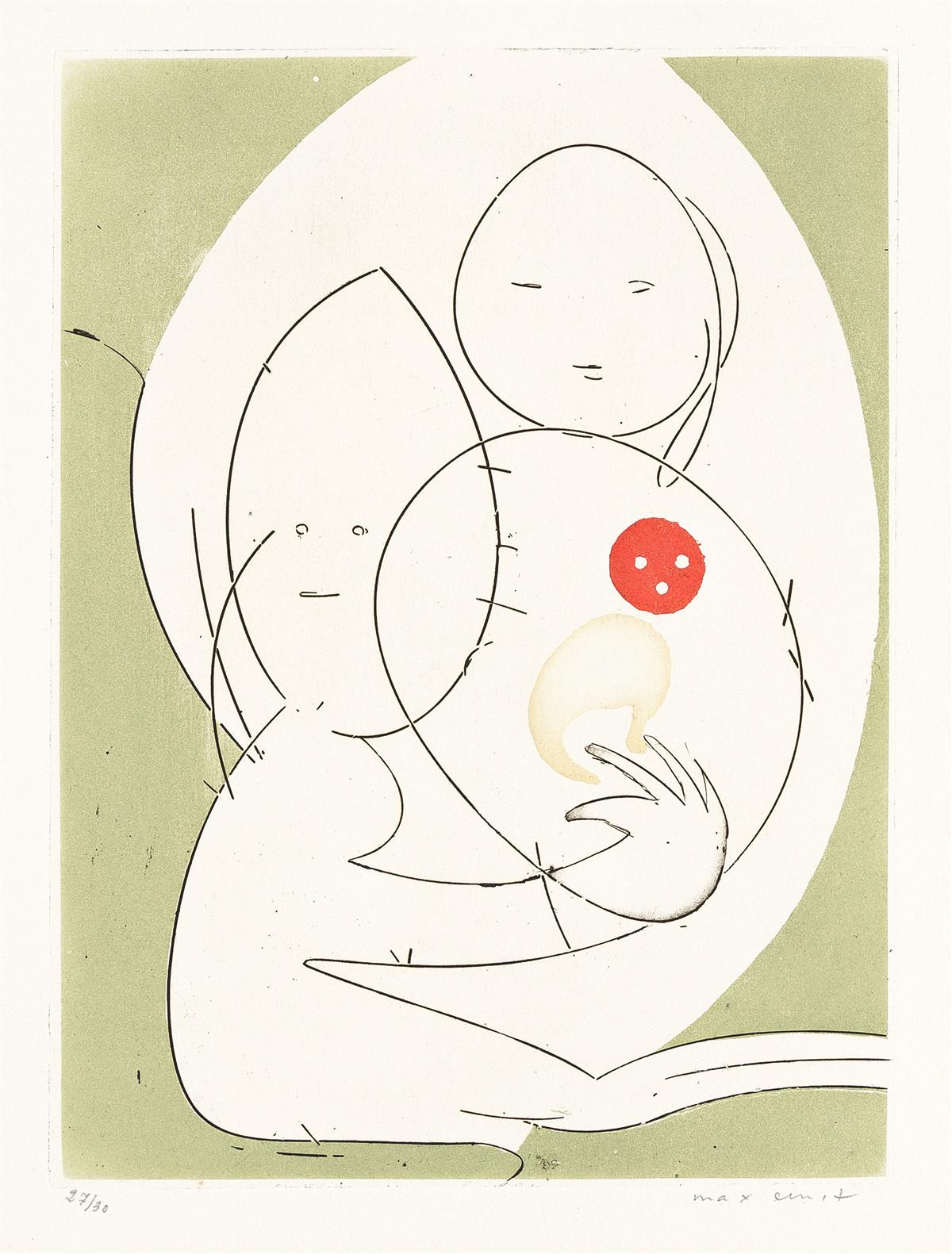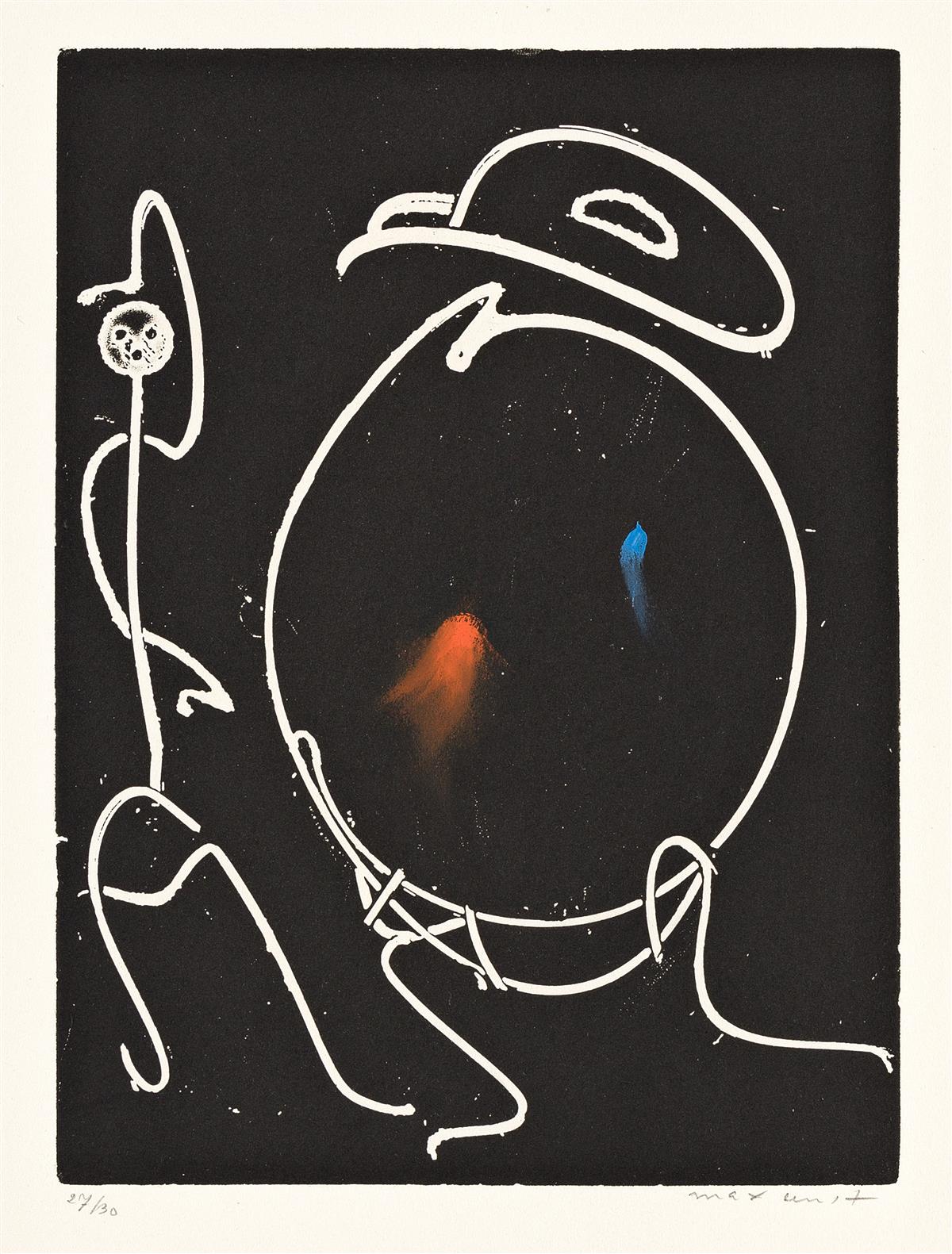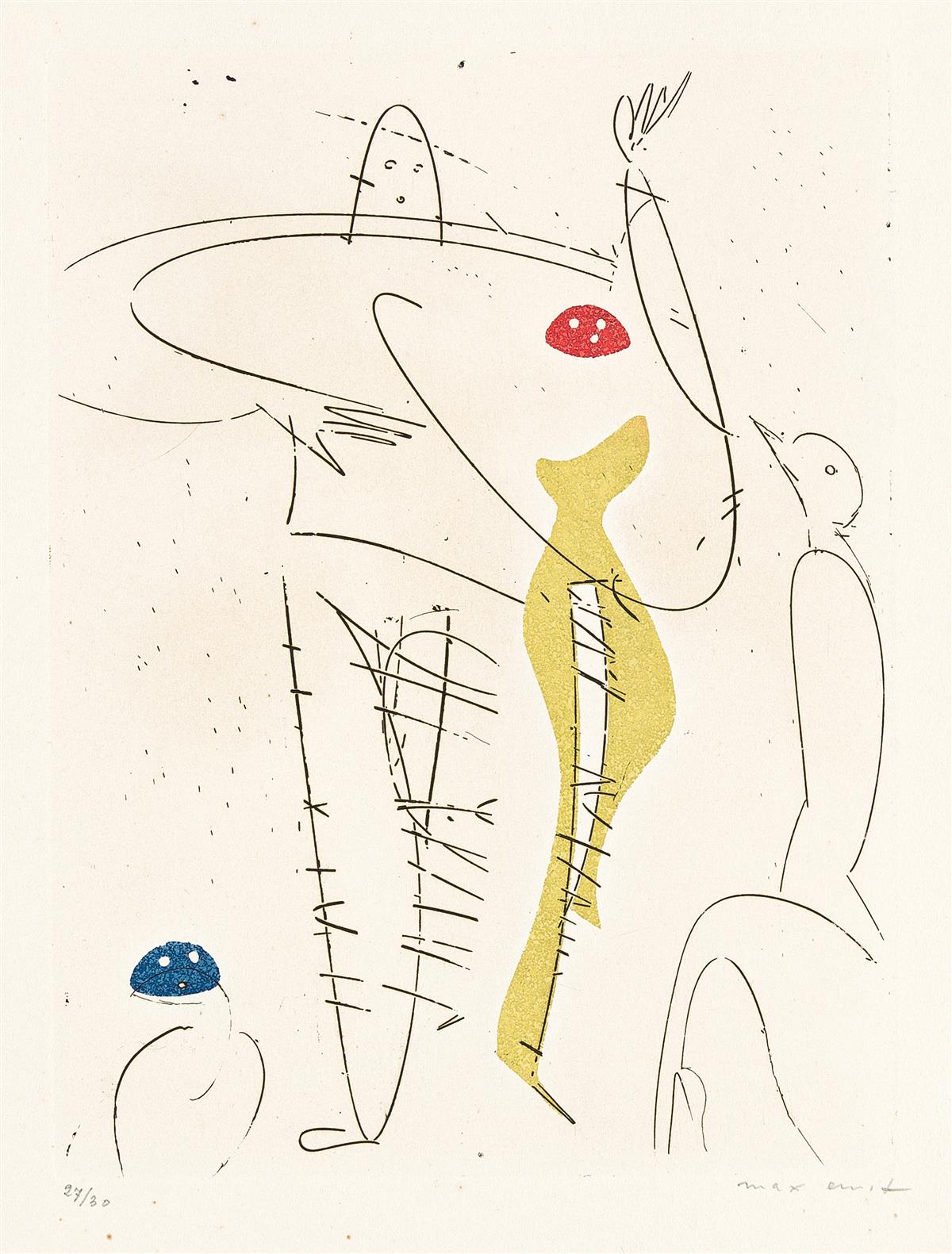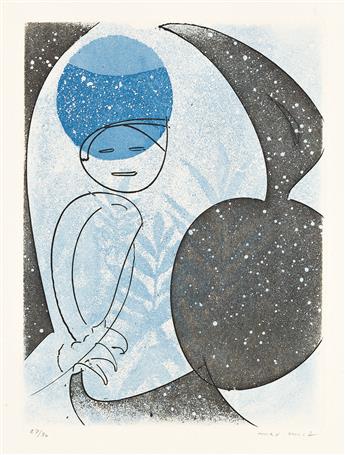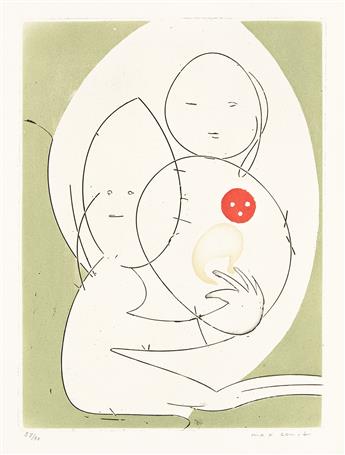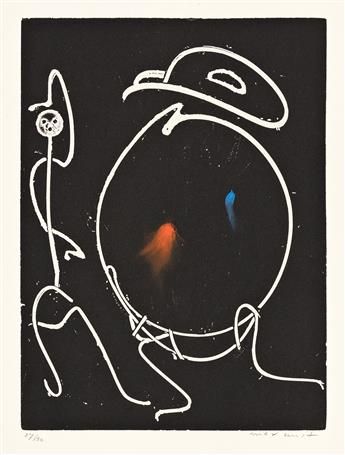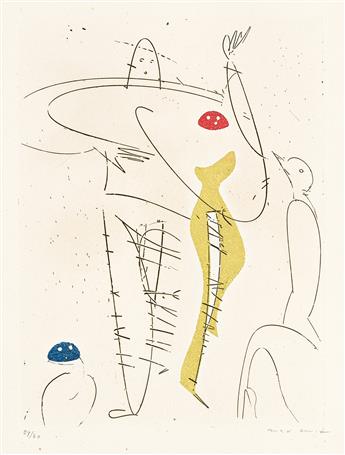Sale 2630 - Lot 164
Unsold
Estimate: $ 25,000 - $ 35,000
MAX ERNST
Das Schnabelpaar.
Portfolio with eight color etchings with aquatint (one with hand coloring in watercolor) and one embossing, 1953. 240x180 mm; 9 3/8x7 inches, full margins, loose as issued. Each etching signed and numbered 27/30 in pencil, lower margin, and signed in ink and numbered "27" on the justification page. Printed by Lacourière, Paris. Published by Ernst Beyeler, Basel. Original vellum and paper wrappers and paper board slipcase. Lacking one text folio with title and copyright.
Ernst (1891-1976) was a German-born painter and sculptor and a leader in the avant-garde Dada and Surrealism movements of the early 20th century. Born in Brühl, near Cologne, he studied philosophy and psychology at Bonn University, and his early works were heavily influenced by the groundbreaking scientific ideas of Sigmund Freud. In 1914, Ernst met Jean Arp in Cologne and both artists became significant figures in the early German Dada movement
In 1922, Ernst moved to Paris and became involved with the Surrealism. His work was highly imaginative, often incorporating found objects and materials into his paintings and sculptures. He pioneered a technique called frottage, which involved rubbing pencils and other objects on paper to create textures and patterns.
Ernst remained in Paris until the outbreak of World War II, when he emigrated to New York, met his wife, the artist Dorothea Tanning, and also lived Arizona. During his time in the United States, Ernst continued to produce art, as well as teach at several universities. In 1959, he returned to France and continued to work as a creative artist. He is regarded as one of the most influential and innovative artists of the 20th century and created an astounding variety of work which ranged from painting to sculpture and graphic art. Spies/Leppien 56.
Das Schnabelpaar.
Portfolio with eight color etchings with aquatint (one with hand coloring in watercolor) and one embossing, 1953. 240x180 mm; 9 3/8x7 inches, full margins, loose as issued. Each etching signed and numbered 27/30 in pencil, lower margin, and signed in ink and numbered "27" on the justification page. Printed by Lacourière, Paris. Published by Ernst Beyeler, Basel. Original vellum and paper wrappers and paper board slipcase. Lacking one text folio with title and copyright.
Ernst (1891-1976) was a German-born painter and sculptor and a leader in the avant-garde Dada and Surrealism movements of the early 20th century. Born in Brühl, near Cologne, he studied philosophy and psychology at Bonn University, and his early works were heavily influenced by the groundbreaking scientific ideas of Sigmund Freud. In 1914, Ernst met Jean Arp in Cologne and both artists became significant figures in the early German Dada movement
In 1922, Ernst moved to Paris and became involved with the Surrealism. His work was highly imaginative, often incorporating found objects and materials into his paintings and sculptures. He pioneered a technique called frottage, which involved rubbing pencils and other objects on paper to create textures and patterns.
Ernst remained in Paris until the outbreak of World War II, when he emigrated to New York, met his wife, the artist Dorothea Tanning, and also lived Arizona. During his time in the United States, Ernst continued to produce art, as well as teach at several universities. In 1959, he returned to France and continued to work as a creative artist. He is regarded as one of the most influential and innovative artists of the 20th century and created an astounding variety of work which ranged from painting to sculpture and graphic art. Spies/Leppien 56.
Exhibition Hours
Exhibition Hours
Aliquam vulputate ornare congue. Vestibulum maximus, libero in placerat faucibus, risus nisl molestie massa, ut maximus metus lectus vel lorem.



